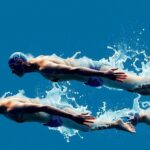Understanding the Classification System of the 2024 Paris Paralympics
The classification system employed at the 2024 Paris Paralympics is crucial in ensuring fair competition among athletes with various disabilities. Unlike the Olympics, which typically feature a singular fastest athlete in each event, the Paralympics delineates multiple classes for each sport, reflecting the diverse range of impairments present in its athletes.
The classification codes, such as PR1, W1, T51, and others, represent specific categories that determine an athlete’s eligibility and competitive grouping based on the nature and extent of their impairment. The International Paralympic Committee (IPC) emphasizes that the primary goal of this system is to “minimize the impact of the impairment on athlete performance,” thus allowing the quality of sporting achievement to dictate competition outcomes rather than the limitations the athletes face.
Eligibility to compete begins with the identification of an “underlying health condition” that leads to a permanent impairment. Eligible impairments fall into three broad categories: physical impairments, vision impairments, and intellectual impairments, with a total of ten specific types recognized.
Each sport has its own rules regarding eligible impairments. While athletics and swimming are inclusive of all eligible types, other sports, such as judo, are confined to athletes with visual impairments, and yet others, like dressage, incorporate a blend of impairment types. The respective sports federations are responsible for assessing whether an athlete meets the impairment criteria necessary for each sport.
The classification structure varies significantly among sports. For instance, athletics features over fifty classifications to accommodate different impairment types, while others, like powerlifting, are limited to a single class based on lower limb impairment. This diversity allows for the inclusion of competitors with varying abilities, where similar activity limitations may permit mixed classifications, such as in wheelchair racing, where athletes with different impairments race against each other.
The determination of an athlete’s sport class is conducted by a panel of experts from various fields, including medicine and sports science. This panel performs assessments and monitors athletes during competitions to classify them accurately, with the understanding that classifications may evolve as an athlete’s medical condition changes.
Each classification label typically begins with a letter denoting the sport and is followed by a number indicating the extent of the athlete’s impairment. For example, in athletics, the classifications range from T51 to T54 for wheelchair racing, and in swimming, classifications such as S1 for specific physical impairments and SM for multi-class events exist.
It is important to note that attempts to misrepresent one’s classification are viewed as serious violations, with penalties including bans of up to four years for initial offenses. Historical instances of “classification doping” demonstrate the importance of integrity in this system, such as a controversy involving the Spanish basketball team at the 2000 Sydney Paralympics, where several players falsely claimed intellectual disabilities.
In 2023, the IPC proposed revisions to its classification code to bolster the integrity of the system and announced that these changes would be implemented in January 2025, while the current rules will govern the upcoming Paris 2024 Games. This rigorous classification system is designed not only to uphold fairness but also to celebrate the remarkable achievements of athletes at the Paralympics, reinforcing the spirit of competition rooted in ability rather than disability.







Post Comment